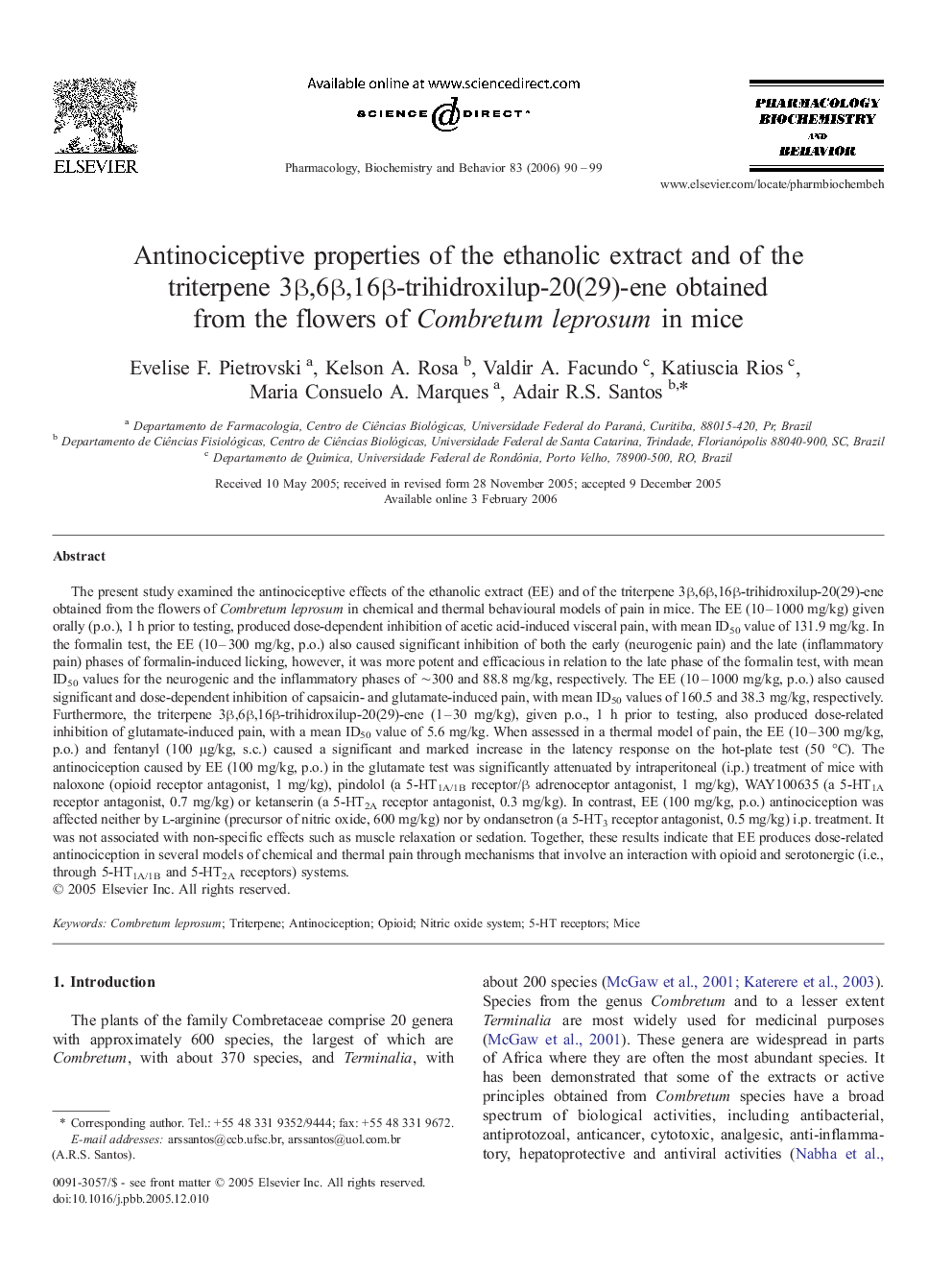| کد مقاله | کد نشریه | سال انتشار | مقاله انگلیسی | نسخه تمام متن |
|---|---|---|---|---|
| 2014216 | 1067148 | 2006 | 10 صفحه PDF | دانلود رایگان |

The present study examined the antinociceptive effects of the ethanolic extract (EE) and of the triterpene 3β,6β,16β-trihidroxilup-20(29)-ene obtained from the flowers of Combretum leprosum in chemical and thermal behavioural models of pain in mice. The EE (10–1000 mg/kg) given orally (p.o.), 1 h prior to testing, produced dose-dependent inhibition of acetic acid-induced visceral pain, with mean ID50 value of 131.9 mg/kg. In the formalin test, the EE (10–300 mg/kg, p.o.) also caused significant inhibition of both the early (neurogenic pain) and the late (inflammatory pain) phases of formalin-induced licking, however, it was more potent and efficacious in relation to the late phase of the formalin test, with mean ID50 values for the neurogenic and the inflammatory phases of ∼300 and 88.8 mg/kg, respectively. The EE (10–1000 mg/kg, p.o.) also caused significant and dose-dependent inhibition of capsaicin- and glutamate-induced pain, with mean ID50 values of 160.5 and 38.3 mg/kg, respectively. Furthermore, the triterpene 3β,6β,16β-trihidroxilup-20(29)-ene (1–30 mg/kg), given p.o., 1 h prior to testing, also produced dose-related inhibition of glutamate-induced pain, with a mean ID50 value of 5.6 mg/kg. When assessed in a thermal model of pain, the EE (10–300 mg/kg, p.o.) and fentanyl (100 μg/kg, s.c.) caused a significant and marked increase in the latency response on the hot-plate test (50 °C). The antinociception caused by EE (100 mg/kg, p.o.) in the glutamate test was significantly attenuated by intraperitoneal (i.p.) treatment of mice with naloxone (opioid receptor antagonist, 1 mg/kg), pindolol (a 5-HT1A/1B receptor/β adrenoceptor antagonist, 1 mg/kg), WAY100635 (a 5-HT1A receptor antagonist, 0.7 mg/kg) or ketanserin (a 5-HT2A receptor antagonist, 0.3 mg/kg). In contrast, EE (100 mg/kg, p.o.) antinociception was affected neither by l-arginine (precursor of nitric oxide, 600 mg/kg) nor by ondansetron (a 5-HT3 receptor antagonist, 0.5 mg/kg) i.p. treatment. It was not associated with non-specific effects such as muscle relaxation or sedation. Together, these results indicate that EE produces dose-related antinociception in several models of chemical and thermal pain through mechanisms that involve an interaction with opioid and serotonergic (i.e., through 5-HT1A/1B and 5-HT2A receptors) systems.
Journal: Pharmacology Biochemistry and Behavior - Volume 83, Issue 1, January 2006, Pages 90–99